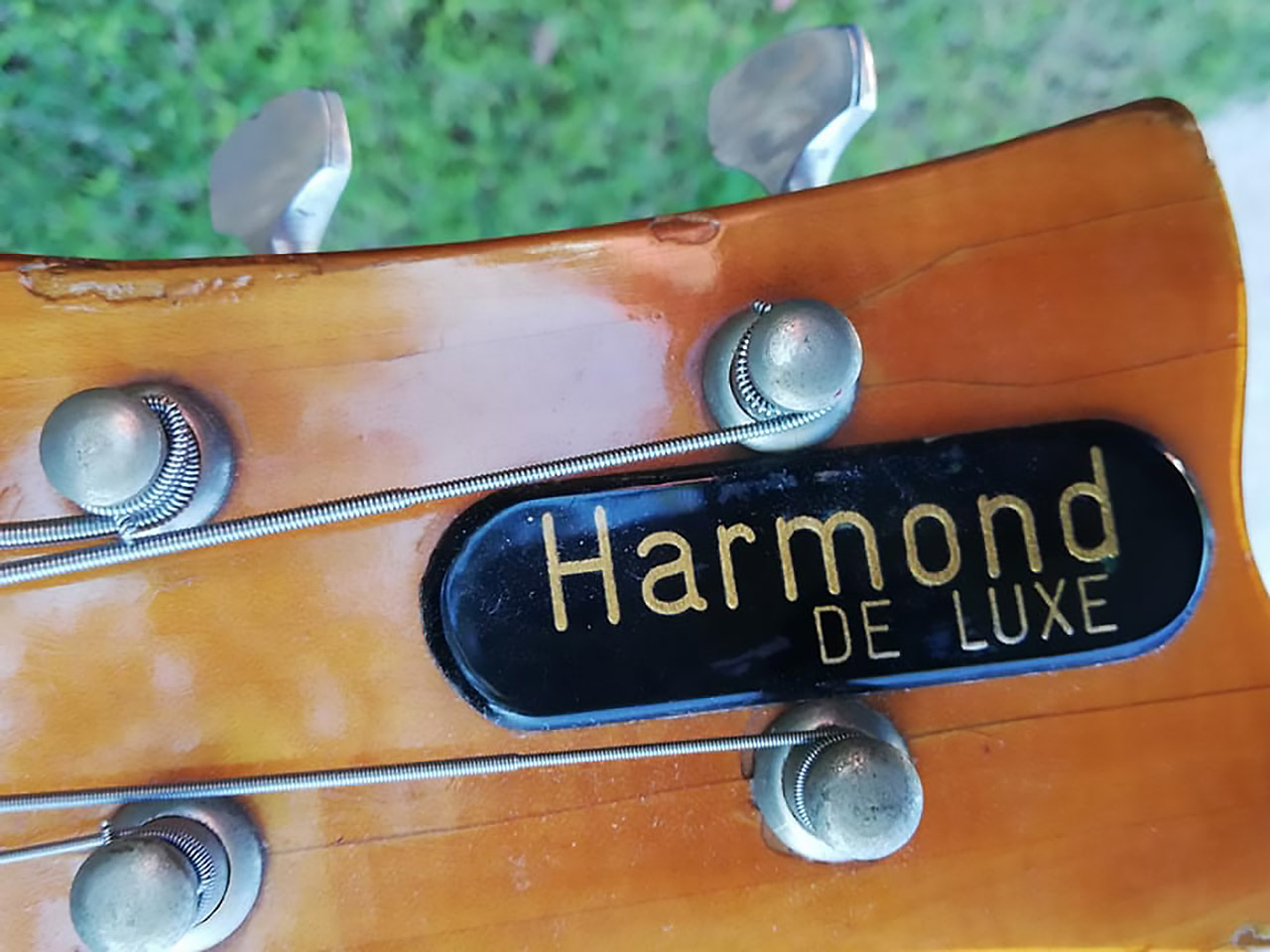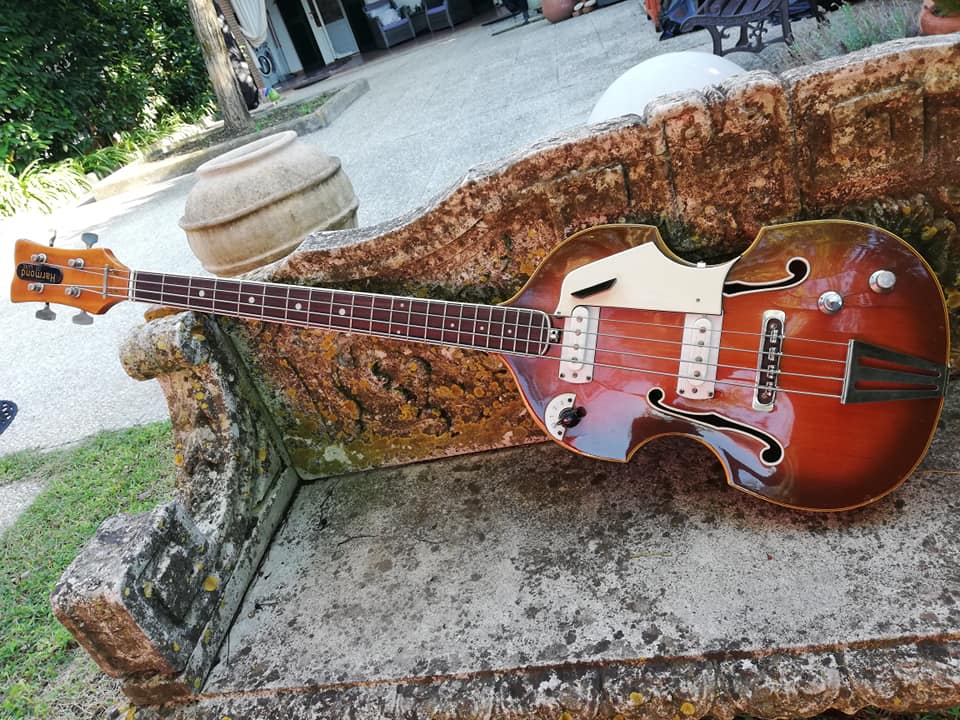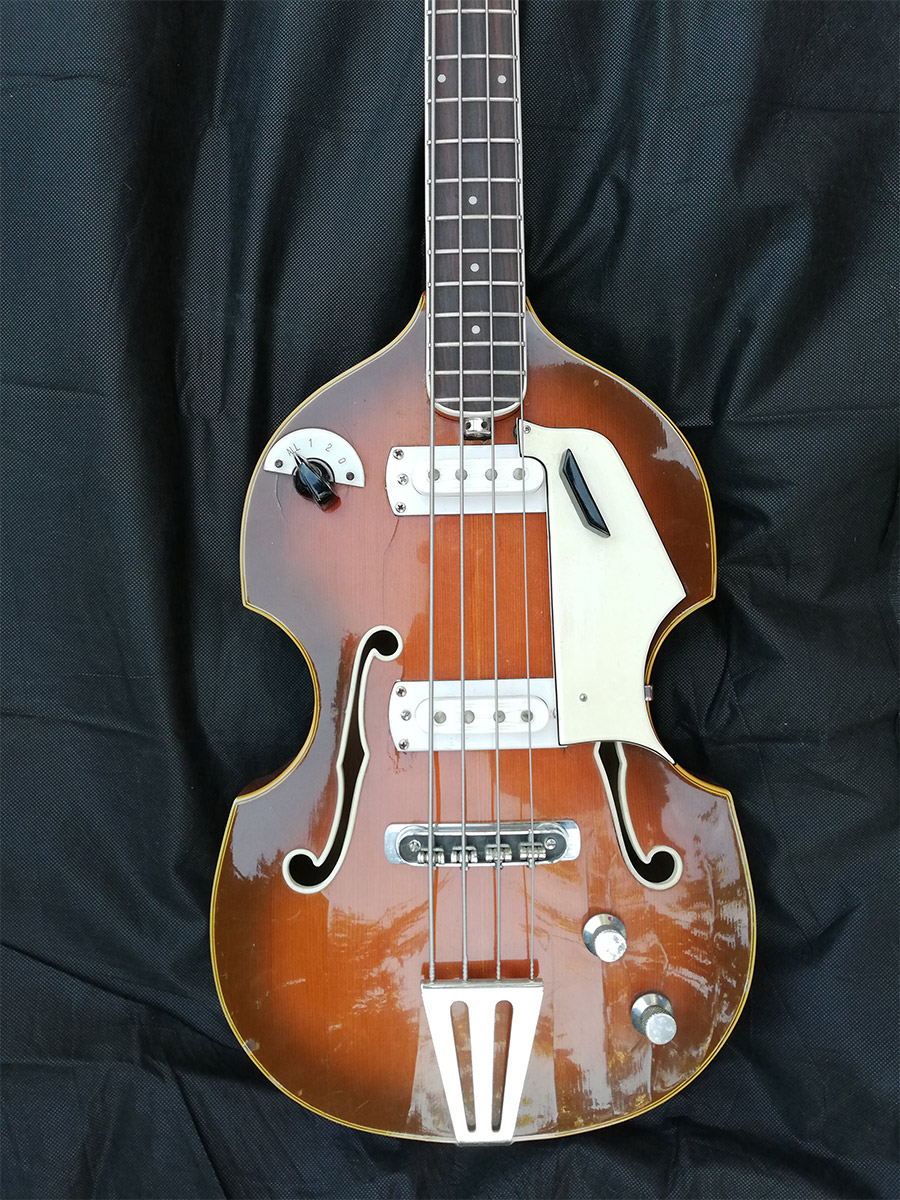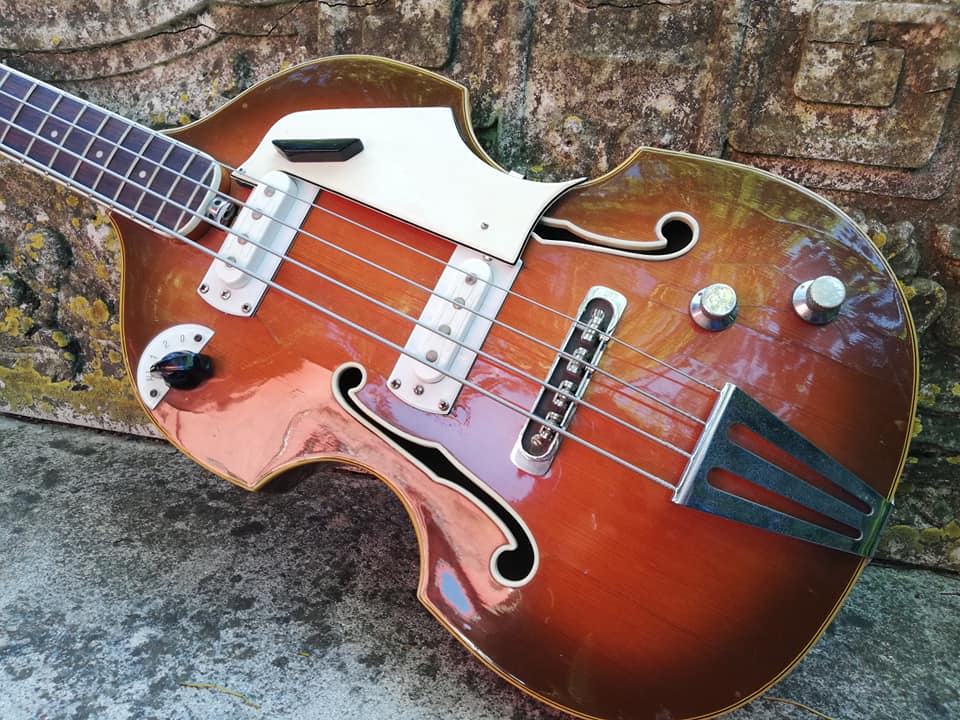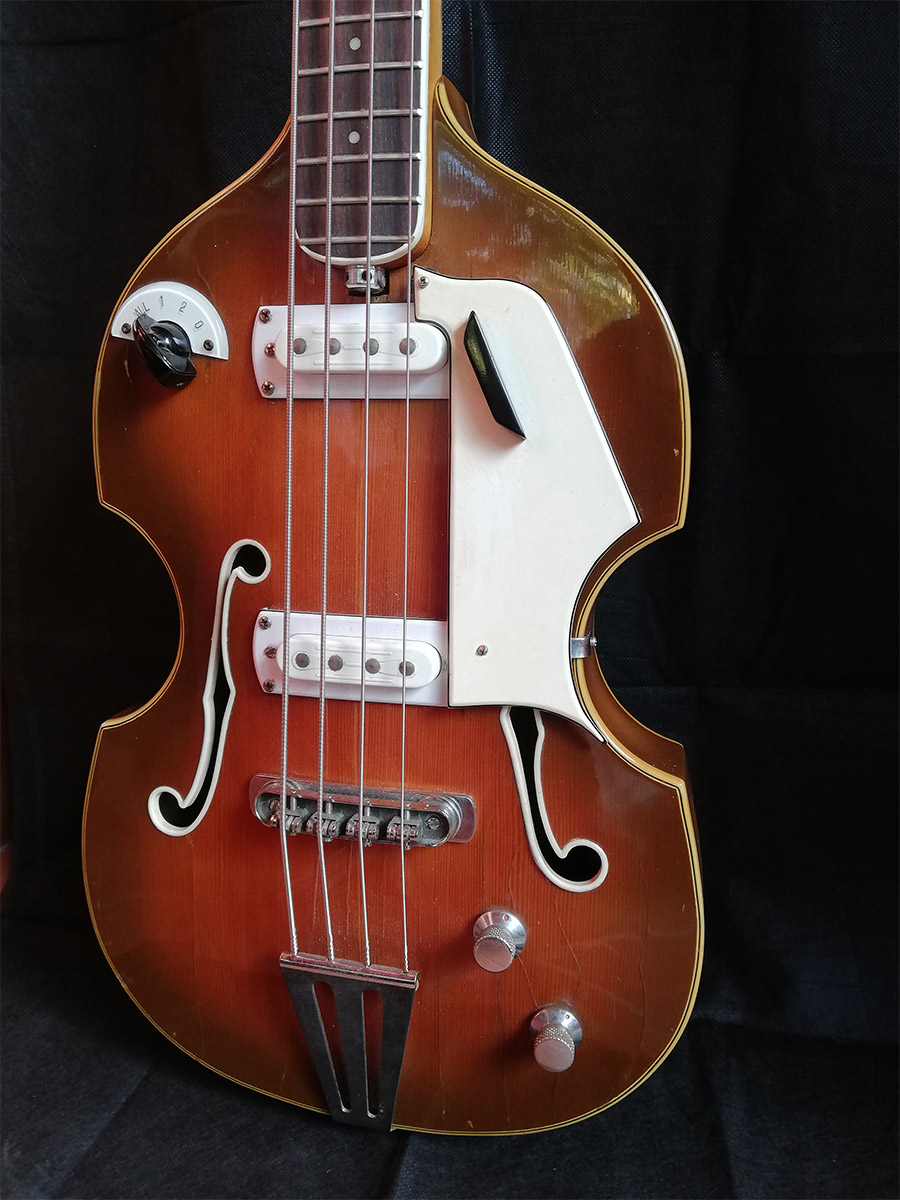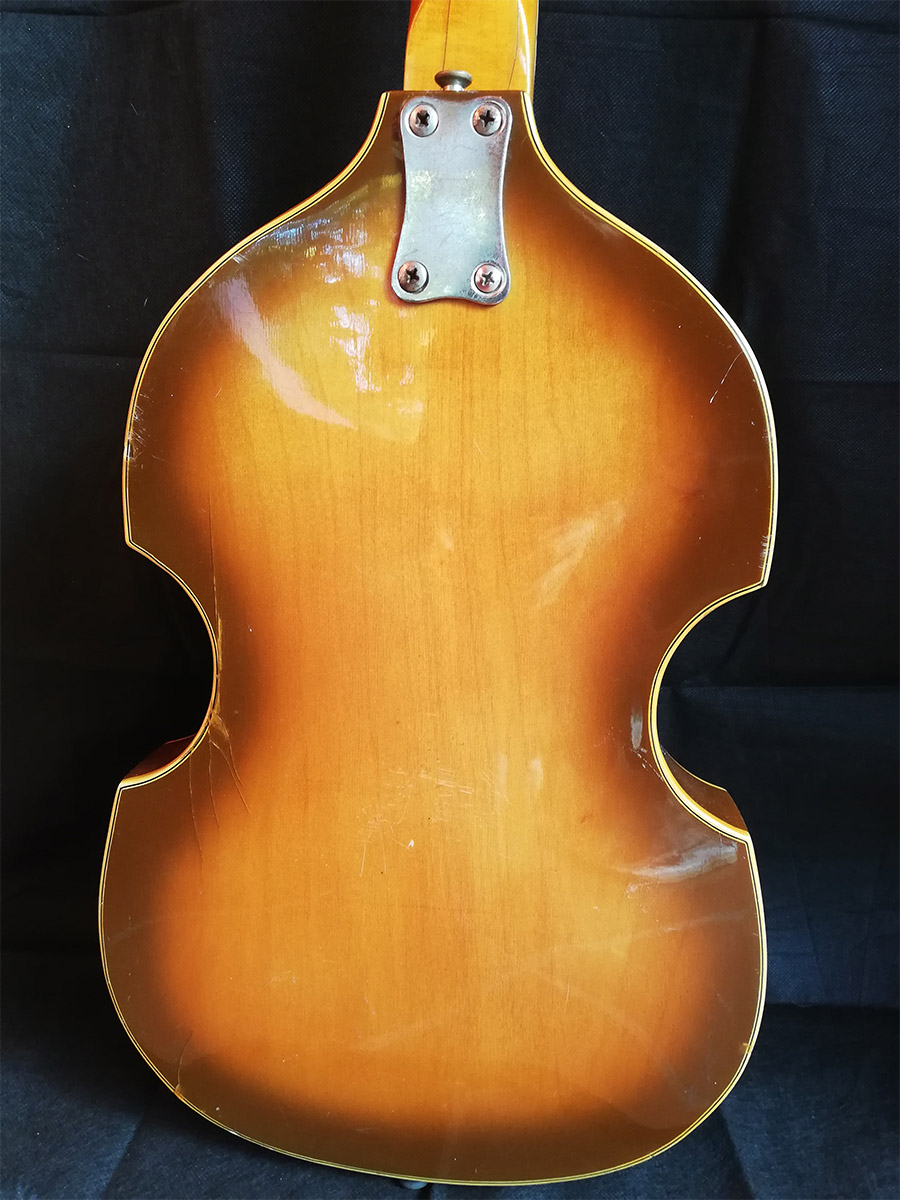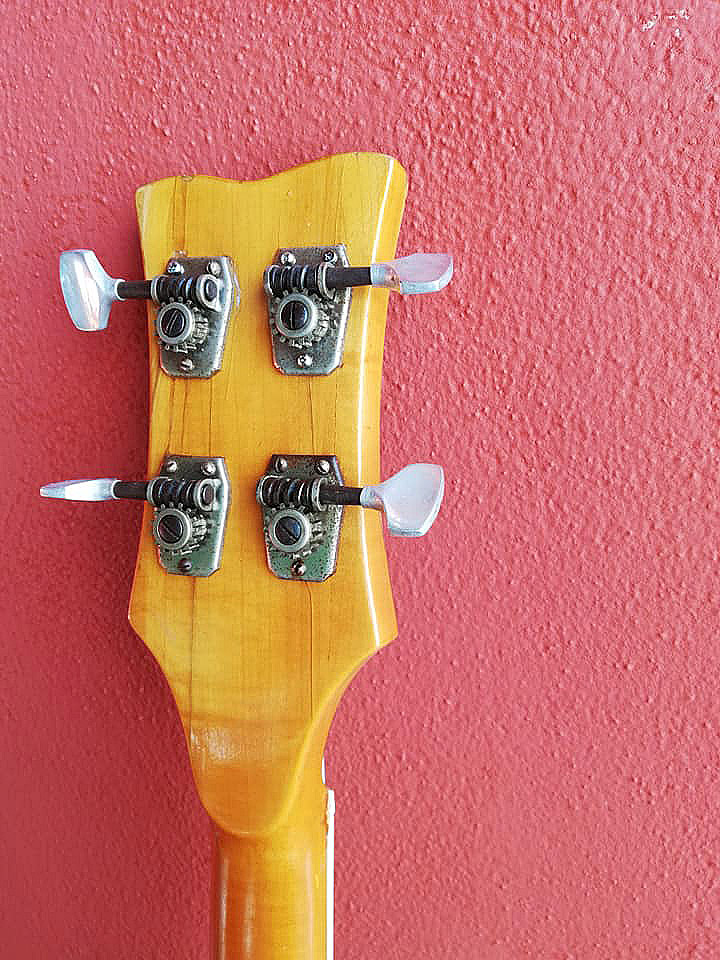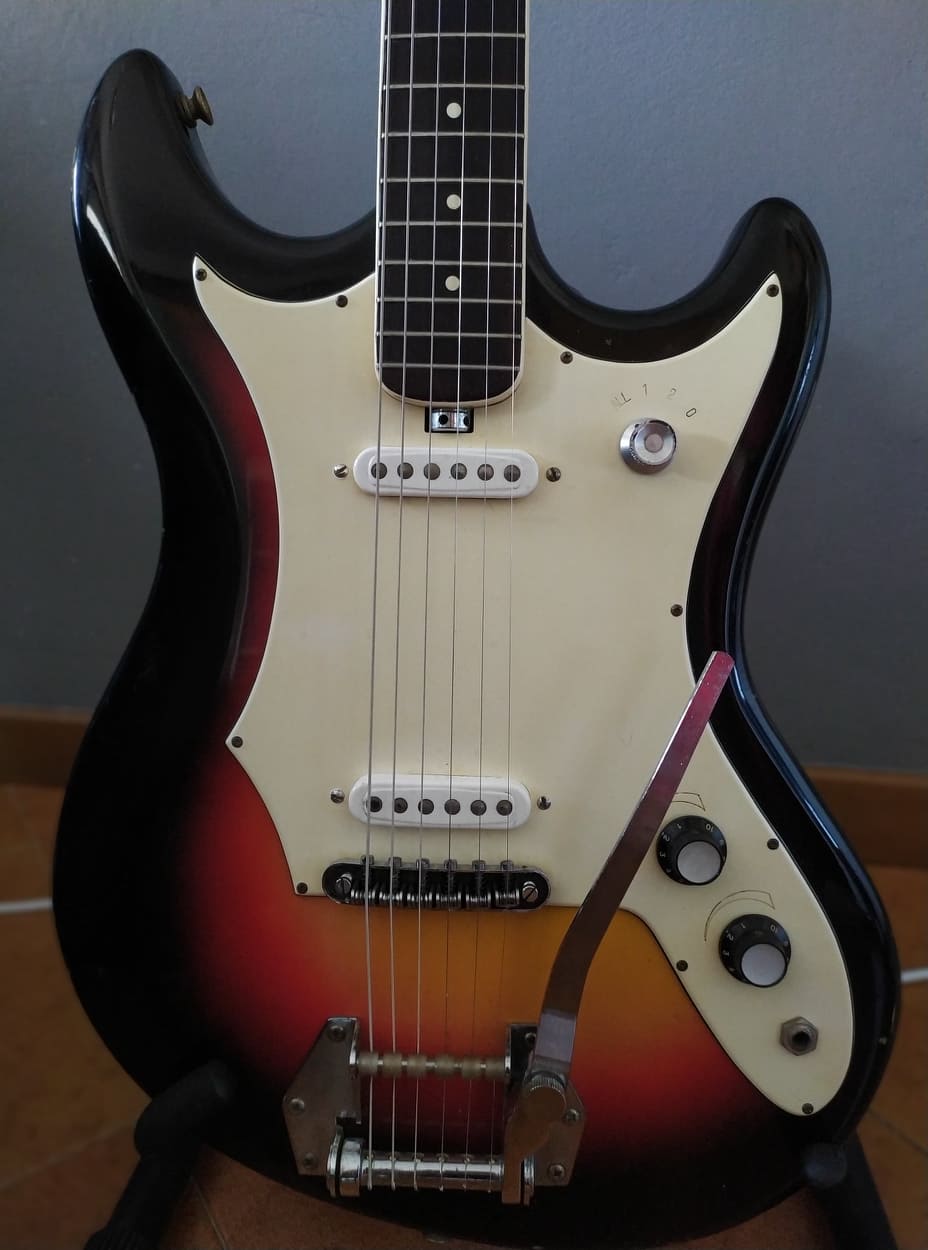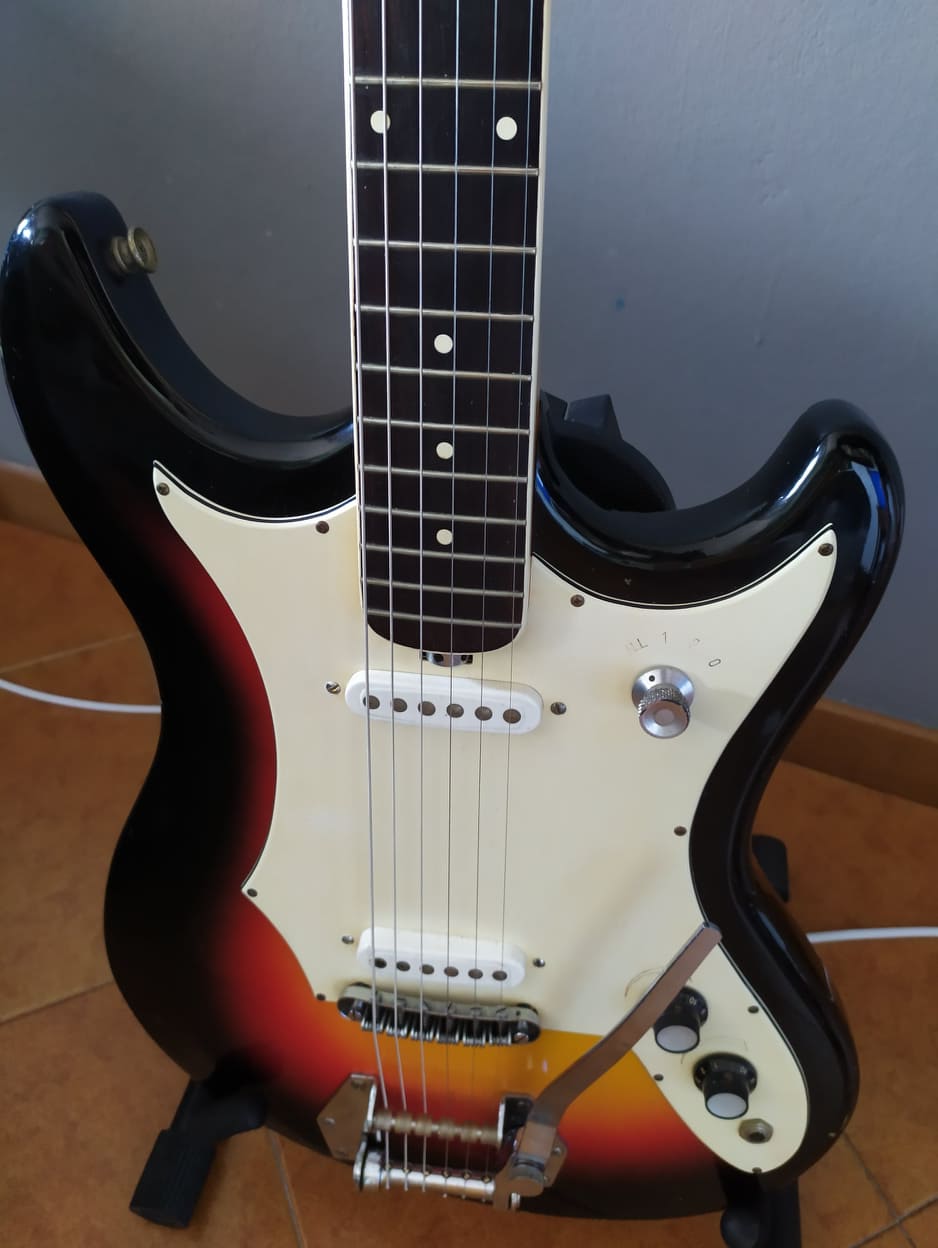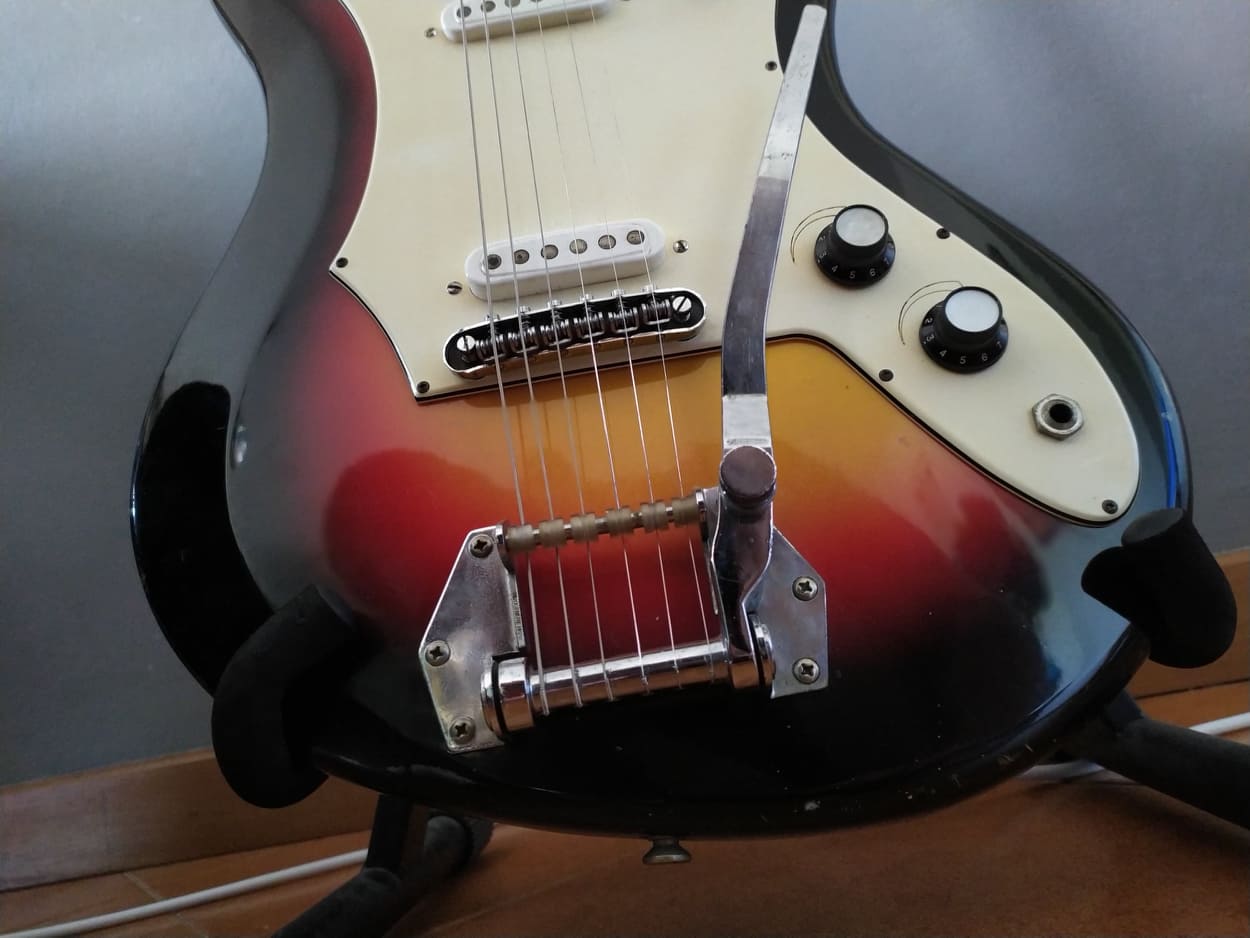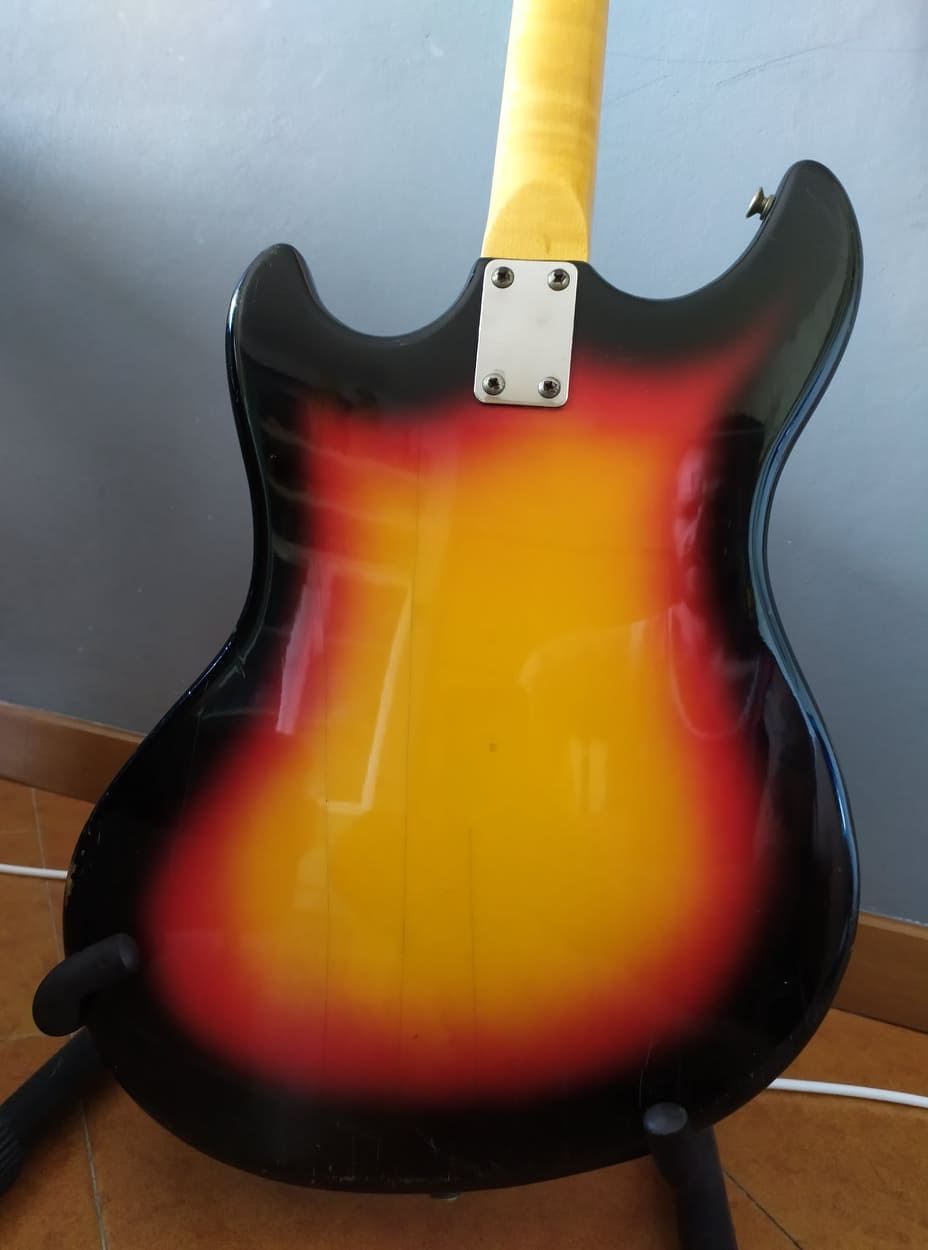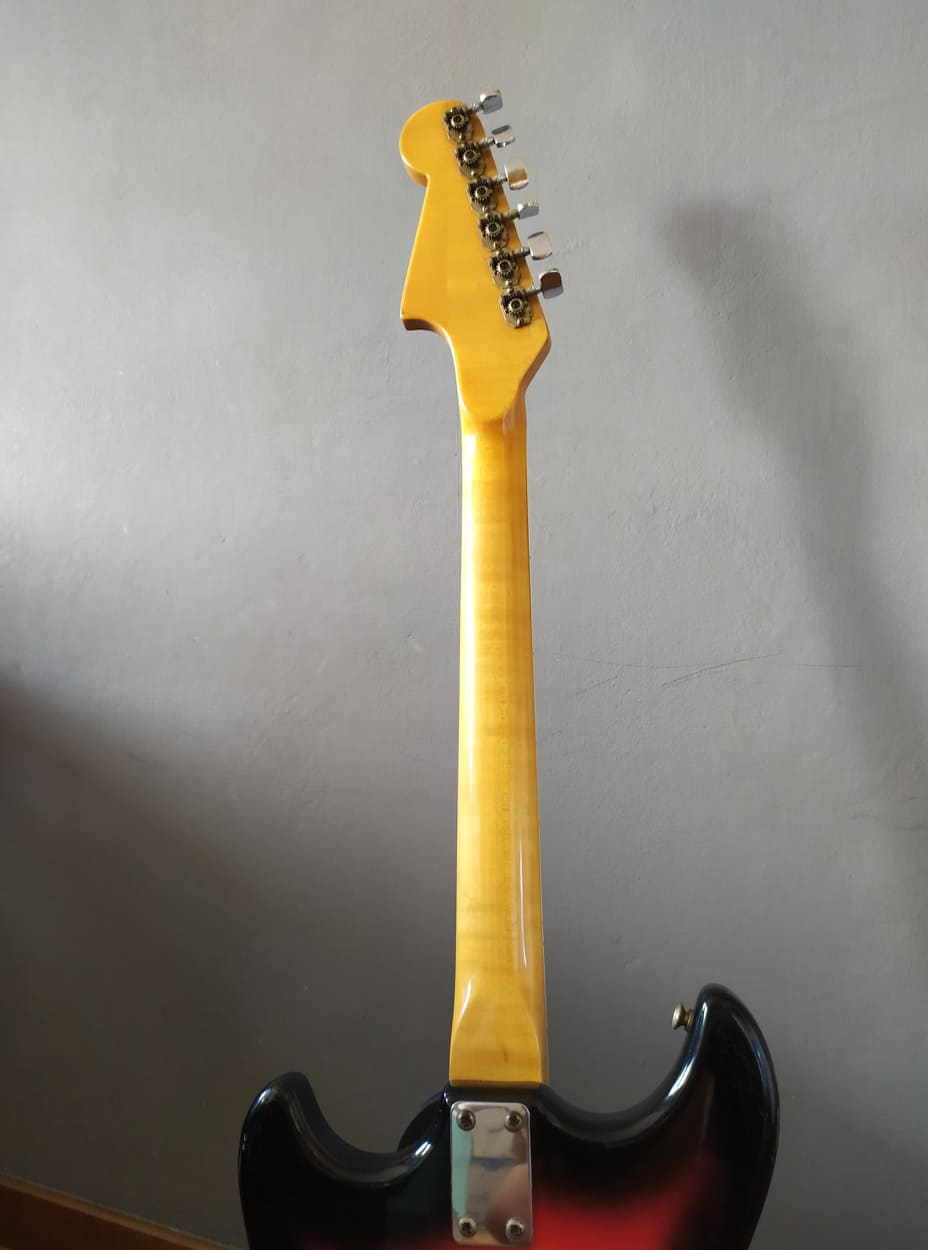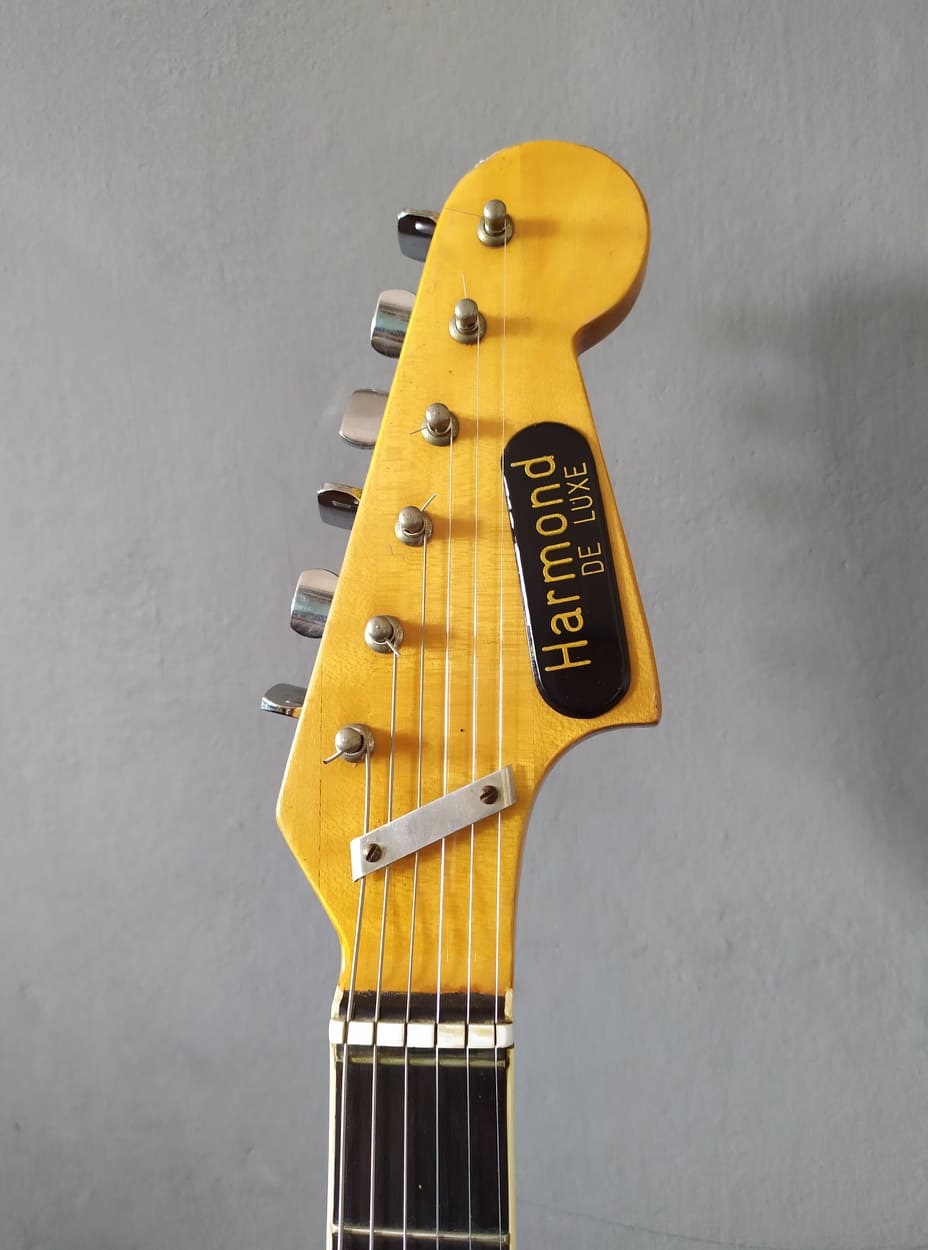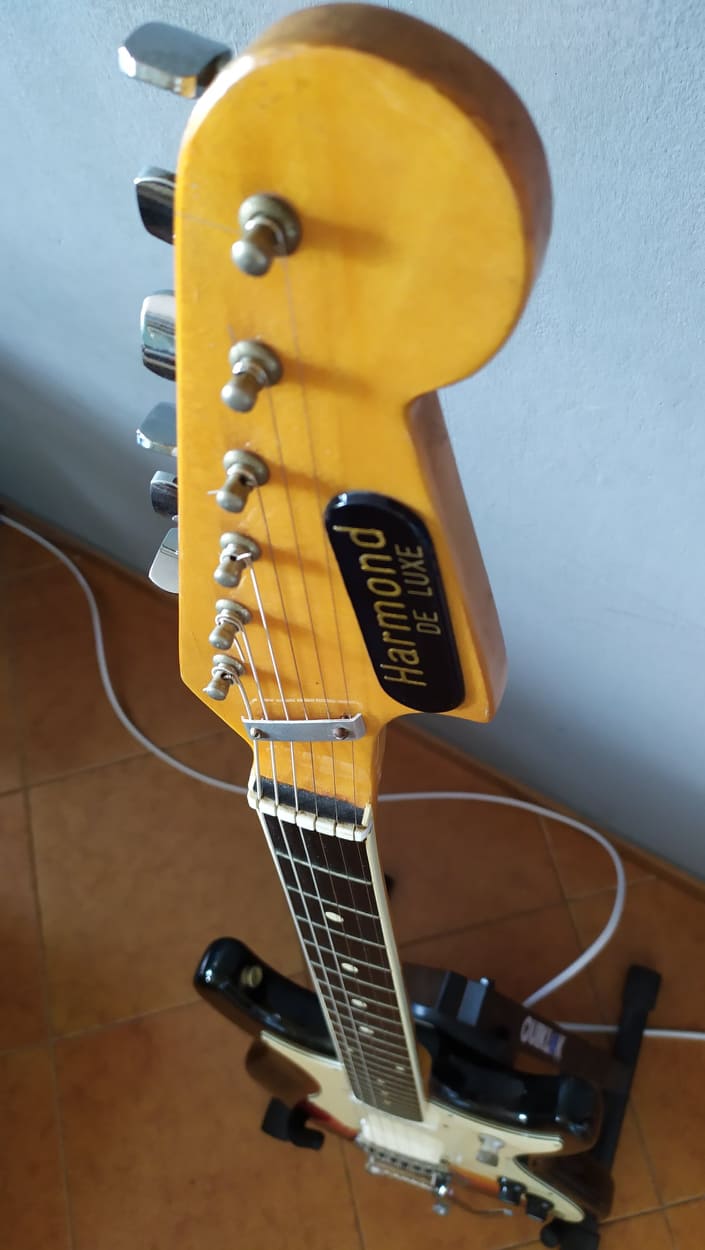”One of the most fascinating things about Italian vintage instruments is the fact of finding yourself, like an Indiana Jones, in a continuous and surprising discovery of unknown brands.
Lorenzo
It is the case of this Harmond De Luxe, with which we inaugurate the Basses section of Classic2vintage.
It is a very well made classic viola bass with absolutely captivating amber tones, which give off the typical warmth and fascination of the vintage instruments.
Its owner, the collector Massimo Bellomo, tells us something about its history:
“I bought this bass in 1975. It was my first bass, a cheap used bass, albeit in excellent condition. I played it (and mistreated it) until 1980, then it was stored in the attic, where it remained until March 2020 when , taking advantage of the lock down, it has been “exhumed”, cleaned up and set up at best.
Today the instrument is in almost original condition (except for the string retainer, which will soon be replaced with the original).
I have never seen a similar one with the same brand, but from research carried out online I discovered that the Harold-Jackson brand (Manlio Accoroni di Castelfidardo, owner of the former ELETTRA accordion factory, located in the old factory of Polverini Bros, later demolished) produced very similar models. “
No other information is currently available on this instrument but, as is our habit, we will continue the research and will keep you informed by updating the article as soon as news is found.
In the meantime, let’s enjoy other images and video tests of this fascinating bass.
Update:
During the research, a Harmond Del Luxe guitar also came up and is for sale. The images are at the end of the article. Anyone interested in purchasing can contact the owner, Mattia Benvenuti.
The Harmond De Luxe guitar is an offset instrument that immediately declares its Italian character, starting from the “zero fret”. It has the classic volume + tone controls and a rotary pickup selection control, with a “zero” position to mute the instrument without affecting the volume.
The adjustment of the truss rod is typically at the heel of the neck and you can act on it without having to separate the neck from the body, as happened on the Fender, with a notable increase in practicality and absolute time savings. This solution, of Italian origin, is found today, absurdly, almost only on the EKO and Ernie Ball Music Man instruments.

